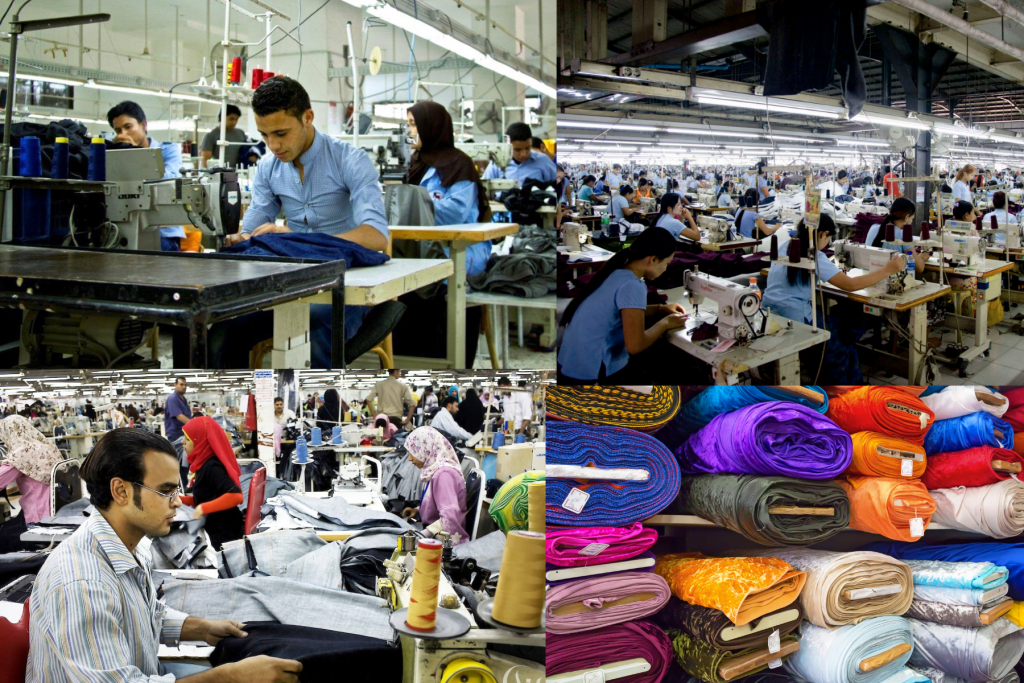How the growing textile industry is affecting the world.

The textile industry in the United States is worth $77 billion. Globally, it is worth $842 billion. This industry is a part of everyone’s lives and incorporates multiple economies in its creation, including agriculture, manufacturing and product development. It also employs millions of individuals worldwide. However, as the world grows to learn the grave atrocities that are committed by this industry, many changes are being made and practices are being shifted to harbor a less toxic environment.
Anytime we check the tag of our clothing item, we find that it was (for the most part) not produced in the U.S, but rather made in a developing nation such as India, Bangladesh, Indonesia and many more. Companies outsource their textile manufacturing from countries where labor is much cheaper and working regulations are less strict. The Rana Plaza incident in Bangladesh, where a building collapsed and killed 1,134 textile workers, finally brought the world’s eyes to the horrible working conditions the employees were put through. According to Sustainyourstyle.org, employees “usually work with no ventilation, breathing in toxic substances, inhaling fiber dust or blasted sand in unsafe buildings. Accidents, fires, injuries, and disease are very frequent occurrences on textile production sites.” On top of this, the workers are given impossible quotas to meet every day, and when that number is not met, managers can resort to verbal and physical abuse. When this came to light, many consumers stopped purchasing fast fashion clothing to turn to brands that are ethically and domestically produced. However, those options are usually much more expensive and not easily accessible to everyone.
Another thing that most people do not realize is how environmentally draining and intensive the fashion industry truly is. After the oil industry, it is the second-largest source of pollution. Similar to cheap labor, another reason companies outsource to developing nations is because environmental guidelines in these countries are not as strict. The toxic wastewater that comes from textile factories are dumped into water sources without treatment, poisoning the communities that grow around them. One way the consumer can help is by choosing textiles that are produced naturally.
Another major concern that we are struck by is the rise of fast fashion. Fast fashion companies such as Zara, H&M, Fashion Nova, Pretty Little Thing, and many more are producing clothing at a rate that has never been seen before. These pieces of clothing are often of much lower quality and very cheap. This leads to consumers constantly buying and disposing of their clothing. “A family in the western world throws away an average of 30 kg of clothing each year. Only 15 percent is recycled or donated, (The Atlantic) and the rest goes directly to the landfill or is incinerated. Synthetic fibers, such as polyester, are plastic fibers, therefore non-biodegradable and can take up to 200 years to decompose. Synthetic fibers are used in 72 percent of our clothing,” (sustainyourstyle.org). In order for us to combat this, we should invest in pieces that last us a long time, buy second-hand clothing and look into the fiber content of clothing pieces so we can pick items that are of natural and organic fibers.
The three reasons I discussed are just the tip of the iceberg. The fashion and textile industry also contributes to soil degradation, toxic runoff, greenhouse gases, rainforest destruction, microfibers in our oceans, child labor, excessive water consumption and so much more. On the other hand, sustainable clothing is made very expensive and inconvenient. The burden seems to be on the consumers: cough up more money, or you might as well support child labor. But placing the moral and financial burden on the consumers is a well-used trick of big industries in order to confuse the public and shirk responsibility. The main burden should be with these big corporations, to use an ethical production process, and the government, to outlaw unethical practices and punishes law-breakers accordingly.
And on our end, we would support slow fashion brands, use second-hand clothing and buy natural and organic fibers. We have a long way to go, but taking these steps is a great way to start.
























